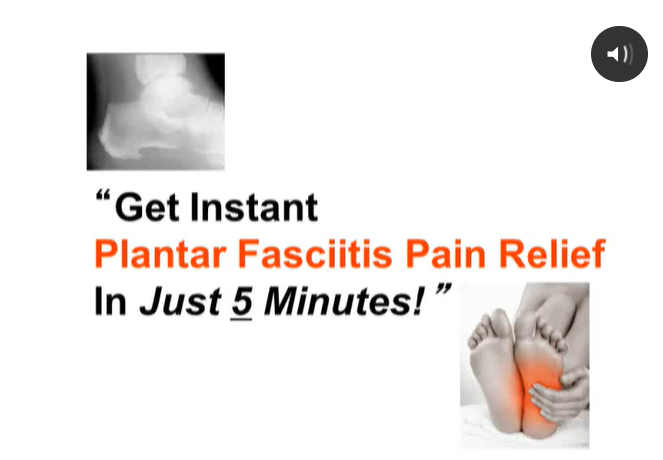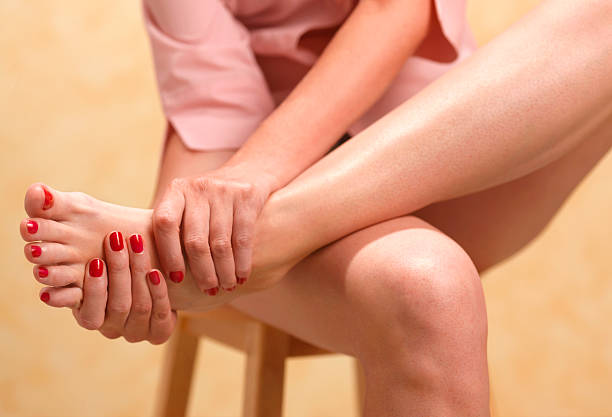Plantar fasciitis is a common foot condition that affects millions of people worldwide. It is characterized by pain and inflammation in the heel and sole of the foot, which can be debilitating and significantly impact one’s daily activities.
In this article, we will explore various methods and products that claim to provide relief from plantar fasciitis pain. We’ll delve into their effectiveness, benefits, and potential drawbacks to help you make an informed decision on managing this condition.

What is Plantar Fasciitis?
Plantar fasciitis is a condition where the plantar fascia, a thick band of tissue connecting the heel bone to the toes, becomes inflamed and irritated. It commonly occurs due to repetitive strain, overuse, improper footwear, or certain medical conditions like obesity and high arches.
Identifying Symptoms
The most common symptom of plantar fasciitis is sharp pain in the heel, especially in the morning or after prolonged periods of rest. The pain can also worsen after physical activity or prolonged standing. Other symptoms may include stiffness, tenderness, and swelling in the affected area.
What are the primary symptoms of plantar fasciitis?
The primary symptoms of plantar fasciitis include:
1. Heel Pain: The most common symptom is pain in the heel, typically felt at the bottom of the foot near the front of the heel bone.
2. Morning Discomfort: Pain and stiffness are often more pronounced in the morning or after periods of rest, such as sitting or sleeping.
3. Pain After Activity: The pain may worsen after prolonged standing, walking, or running activities.
4. Tenderness: The affected area may be tender to the touch, and pressing on it can cause discomfort.
5. Swelling: In some cases, there may be mild swelling in the heel region.
6. Difficulty Walking: The pain may make it challenging to walk normally, leading to a limp or altered gait.
7. Painful First Steps: Pain can be especially sharp with the first few steps taken after getting out of bed or standing up from a seated position.
Plantar fasciitis is caused by the inflammation and irritation of the plantar fascia, a thick band of tissue that runs from the heel bone to the toes.
The exact cause of the condition is not always clear, but several factors can contribute to its development. Some of the primary causes and risk factors of plantar fasciitis include:

What causes plantar fasciitis and who gets it?
1. Overuse or Repetitive Strain: Activities that involve excessive running, jumping, or standing on hard surfaces can strain the plantar fascia, leading to inflammation and microtears.
2. Foot Structure: People with flat feet, high arches, or abnormal walking patterns (gait) are more prone to developing plantar fasciitis due to uneven weight distribution on the foot.
3. Obesity: Excess body weight can put additional stress on the plantar fascia, increasing the risk of inflammation and pain.
4. Age: Plantar fasciitis is more common in adults between the ages of 40 and 60.
5. Improper Footwear: Wearing shoes that lack proper arch support or cushioning can contribute to plantar fasciitis, as they fail to adequately absorb shock and support the foot.
6. Occupation:Certain occupations that involve prolonged standing or walking, such as teachers, factory workers, or healthcare professionals, can increase the likelihood of developing the condition.
7. Physical Activity: Athletes and individuals who engage in high-impact sports like running, basketball, or soccer are at a higher risk of developing plantar fasciitis.
8. Tight Calf Muscles: Limited flexibility in the calf muscles can exert more tension on the plantar fascia, making it more susceptible to injury.
9. Sudden Weight Gain: Rapid weight gain can put additional strain on the plantar fascia, increasing the risk of inflammation.
It’s important to note that while certain factors may increase the likelihood of developing plantar fasciitis, anyone can experience this condition.
Additionally, individual predisposition and lifestyle choices can play a significant role in its occurrence. If you suspect you have plantar fasciitis or are experiencing persistent foot pain, consult a healthcare professional or a podiatrist for an accurate diagnosis and appropriate treatment plan.
WellMe Collagen Refresh Reviews-( Legit Or Scam) What are Customer Saying?
Traditional Methods of Plantar Fasciitis Pain Relief
Rest and Ice
One of the initial steps in managing plantar fasciitis pain is to rest the affected foot and apply ice to reduce inflammation. This method can provide temporary relief but might not be enough for long-term management.
Stretching Exercises
Stretching exercises can help improve flexibility and reduce tension in the plantar fascia. Simple calf stretches and toe curls can be beneficial in alleviating discomfort.
Orthotic Inserts
Orthotic inserts or arch supports can help distribute pressure evenly across the foot and provide additional support. These inserts are available in various shapes and sizes to cater to individual needs.
Night Splints
Night splints are devices worn during sleep to keep the foot and ankle in a dorsiflexed position. This helps stretch the plantar fascia and Achilles tendon, potentially reducing morning pain and stiffness.
Review of Plantar Fasciitis Pain Relief Products
Orthopedic Shoe Inserts
Orthopedic shoe inserts are designed to provide arch support and cushioning to alleviate plantar fasciitis pain. These inserts come in different materials and designs to suit various foot types.
Plantar Fasciitis Compression Socks
Compression socks can help improve blood circulation and reduce swelling in the foot. Some variants also offer targeted compression around the plantar fascia to ease discomfort.
Plantar Fasciitis Splints
Plantar fasciitis splints are similar to night splints but are designed for daytime use. They provide continuous stretching and support during daily activities.
Foot Massage Rollers
Foot massage rollers can help relieve tension in the plantar fascia through rolling and massaging the foot. They are portable and can be used at home or work.
Topical Pain Relief Creams
Topical creams containing anti-inflammatory ingredients can be applied directly to the affected area for quick relief from pain and inflammation.
Choosing the Right Product
Selecting the most suitable product for plantar fasciitis pain relief can be challenging. It’s essential to consider factors such as the severity of your condition, personal preferences, and any existing medical conditions. Consulting with a healthcare professional or podiatrist can also provide valuable guidance.
Plantar Fasciitis Pain Relief Cost:

Conclusion:
Plantar fasciitis can be a painful and frustrating condition, but there are various products and methods available to alleviate discomfort and promote healing.
Remember that what works for one person may not work for another, so it’s essential to explore different options and find the best fit for your individual needs. In addition to using pain relief products, incorporating lifestyle changes such as proper footwear and stretching exercises can contribute to long-term relief.
Frequently Asked Questions?
1. Are pain relief products for plantar fasciitis safe to use?
Ans: While many pain relief products are safe for general use, individuals with specific medical conditions or allergies should exercise caution and consult with a healthcare professional before use.
2. Can plantar fasciitis resolve without any treatment?
Ans: In some cases, plantar fasciitis may improve on its own with rest and home care. However, for chronic or severe cases, seeking appropriate treatment is recommended.
3. Can I continue exercising with plantar fasciitis?
Ans: It’s best to avoid high-impact activities during the acute phase of plantar fasciitis. Low-impact exercises and stretching are generally safer and less likely to exacerbate the condition.
4. How long does it take to experience relief from these pain relief products?
Ans: The time taken for relief may vary from person to person. Some individuals may experience immediate relief, while others may require several weeks of consistent use.
5. Can plantar fasciitis recur after successful treatment?
Ans: Yes, plantar fasciitis can recur, especially if preventive measures are not taken. Maintaining proper foot care and avoiding overuse can help prevent recurrence.
Disclaimer:
We are a professional product review website. We might receive compensation when you buy through our website. We may earn a small commission. The information contained on this website is provided for informational purposes only and is not meant to substitute for the advice provided by your doctor or other healthcare professional. The products have not been evaluated by the Food and Drug Administration and are not intended to diagnose, treat, cure, or prevent any disease.
